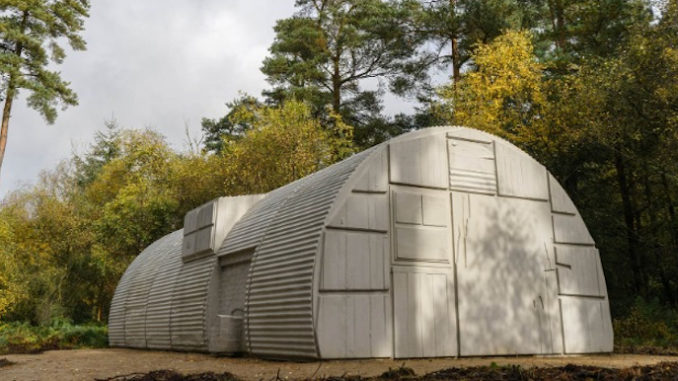
Plans to extend a series of public artworks in an 8,500-acre forest are being re-examined after concerns emerged over powering sound equipment in a multimedia artist’s installation.
Forestry England has lodged an application with the North York Moors National Park Authority to install a ground mounted solar array for Nayan Kulkarni’s A Room That Sings near a bridleway in Dalby Forest, between the Hole of Horcum and Harkness.
The move follows the body responsible for managing and promoting publicly-owned forests in England gaining planning permission for a work by the artist who was hailed as “the new Anish Kapoor” after his 75-metre wind turbine blade piece was installed in Hull.
It comes just weeks afrer the authority gave consent to Forestry England to install a 400kg cast iron artwork tribute to cycling and the area’s historic mining operations in the Courtyard, at Low Dalby.
Previous installations in the forest have drawn controversy, such as an 11m by 5m concrete sculpture of a Nissen hut by Turner Prize winning artist Rachel Whiteread.
However, documents lodged with the show Allerston and Wilton Parish Council have not objected to the plans.
The papers state since being granted planning permission for A Room That Sings research had revealed the solar array could not be installed on the same site as the artwork, due to a mains gas pipeline running underneath.
Instead of the 20 solar panels being introduced to the highly protected area at the end of a track in the forest, it is now proposed to be located among
birch and Sitka spruce trees beside the actively promoted Woodcock Way Trail.
However, the proposed site of the solar array is alongside an existing forest road, the verge of which was highlighted as species rich in a 2010 survey.
The application states some trees will need to be cleared before installation to enable the verge to be maintained open and unobstructed.
No protected species or habitats, veteran trees or trees of significant interest or with potential bat roost features have been identified in the area of the proposed works.
An ecologist for the authority said as the development was above the biodiversity net gain threshold Forestry England would need to demonstrate that there will be a ten per cent net gain for biodiversity as part of the proposals.
The application concludes: “As well as powering the artwork it will also highlight a new way of thinking about energy and engage people in Forestry England’s drive to become carbon free by 2033.
“The solar panels will be installed on a metal structure that can withstand the weather conditions of the site and the pressure of visitors.
“The solar array supports the cultural experience of the forest landscape and follows through on sustainability principles. A Room That Sings interprets the sounds of the forest and requires electricity to do that.
“To minimise the impact of the installation and not connect to the electricity grid, the Solar Array will provide the electricity in close proximity of the location where it will be consumed.”


Be the first to comment